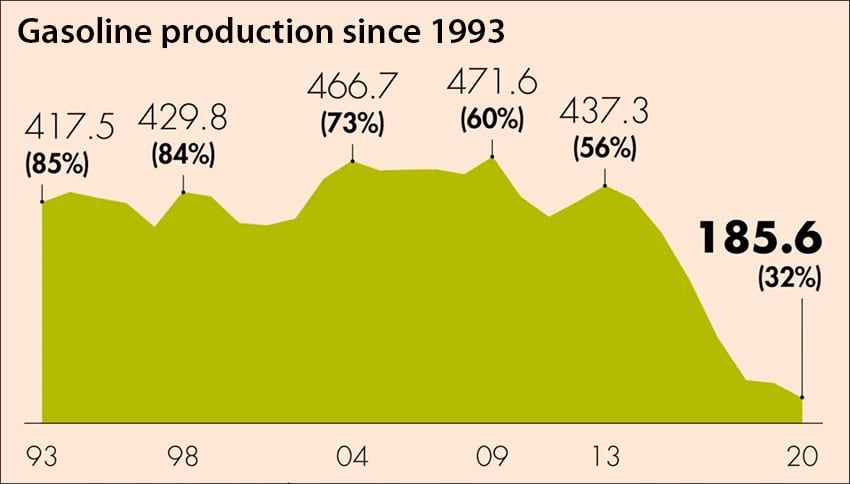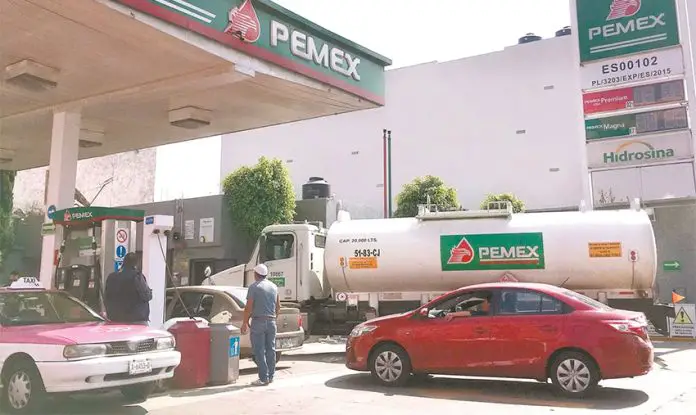The performance of Mexico’s six state-owned oil refineries was disappointing in 2020: the refining target was not met and gasoline production declined to its lowest level in almost three decades.
The Cadereyta, Minatitlán, Salina Cruz, Tula, Madero and Salamanca refineries processed an average of 591,100 barrels of crude per day last year. The figure represents just 38.3% of capacity, which is 1.54 million barrels per day (bpd), according to the federal Energy Ministry.
When the federal government took office in December 2018, the refineries were operating at 33.1% capacity and Energy Minister Rocío Nahle pledged that they would increase daily processing to 900,000 bpd, or 58% of capacity, by the end of 2019.
But the refineries fell well short of that target and in 2020 failed to meet a new goal of 651,000 bpd pledged by Pemex CEO Octavio Romero.
Erick Sánchez Salas, an energy director at the business intelligence company IHS Markit, said the poor 2020 refining result is not surprising because Pemex has directed resources that are needed to operate, maintain and upgrade the existing refineries to the new Dos Bocas refinery, which is currently being built on the Gulf of Mexico coast in Tabasco.

The newspaper El Universal reported that a significant part of the problem is a lack of crude to process. Many energy sector analysts have been critical of the decision to build the US $8-billion refinery, arguing that it diverts funds from Pemex’s more profitable exploration business.
Gasoline production levels were also disappointing last year. The six refineries produced an average of 185,600 bpd of gasoline, a 9% decline compared to 2019. That daily quantity of gasoline was the lowest average level since 1992 and only met 32.4% of national demand, meaning that Mexico remained heavily dependent on imports.
(Domestic gasoline production as a percentage of demand actually increased 4% in 2020 but that was a by-product of decreased overall demand for fuel due to the coronavirus pandemic. Gasoline sales fell last year to levels not seen since 2002.)
In the 1990s, Mexico was producing enough gasoline to meet more than 80% of national demand but production as a proportion of demand fell to 73% in 2004, 60% in 2009 and 56% in 2013. During the 2012-2018 presidency of Enrique Peña Nieto, gasoline production declined significantly and has not recovered since President López Obrador took office despite his promise to “rescue” the state oil company.
Diesel production at the six refineries also fell last year, declining 13% compared to 2019 levels to an average of 113,600 bpd.
In 2020, budget cuts affected the operation of the refineries, El Universal said. The newspaper also said that Pemex’s Industrial Transformation division used just 47.9% of the 69.5 billion pesos (US $3.4 billion) allocated to it.
President López Obrador last year pledged that Mexico would be self-sufficient in gasoline by 2023 through the rehabilitation of Mexico’s six existing refineries and the construction of the new one on the Tabasco coast. In early 2021, that goal looks extremely ambitious at best.
Source: Reforma (sp), El Universal (sp), El Economista (sp)
